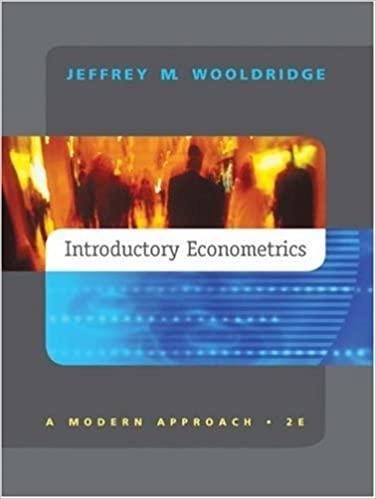Question
Assume that you have been given a free ticket with no resale value to the holiday on Ice Show at Madison Square Garden featuring Michelle
Assume that you have been given a free ticket with no resale value to the holiday on Ice Show at Madison Square Garden featuring Michelle Kwan. At the same time, the Yankees are playing the Red Sox in New York which is your second best alternative activity. Tickets to the game cost is $ 38. You would be willing to pay $ 45 to attend the game. There is no additional costs of attending either event.
Question 1
What is the least amount of money you would have to value seeing Kwan in
order for you to choose the holiday on Ice Show?
$7
$38
$48
$0
Question 2
Basic concept used under this study is :
Incremental Cost
Marginalism
None of the above
Opportunity Cost
Question 3
Benefits of the opportunity cost approach to individual decision making:
"Opportunity costs are subjective, existing in the minds of decision makers."
"Economic profit would be total revenue minus all costs, including both explicit costs of purchased inputs and implicit (opportunity) costs of owner provided resources. "
All of the above
focuses on the economic ramifications of choices and expresses what is given up (a net benefit) by making a choice.
Question 4
"If the production possibilities frontier is not bowed out but is a line, indicates there is"
Scarcity
Constant opportunity cost
Unemployment
Increasing Opportunity Cost
Question 5
Which one of the following does measure risk?
Standard Deviation
Expected value
All of the above
Coefficient of variation
Question 6
"If a person's utility doubles when their income doubles, then that person is
risk"
None of the above
seeking
averse
neutral
Question 7
Strategy A has an expected value of 10 and a standard deviation of 3.
Strategy B has an expected value of 10 and a standard deviation of 5.
Strategy C has an expected value of 15 and a standard deviation of 10.
Which one of the following statements is true?
"A risk averse decision maker will always prefer A to B, but may prefer C to A"
All of the above are correct
A risk neutral decision maker will always prefer C to A or B
A risk seeking decision maker will always prefer C to A or B
Question 8
A situation in which a decision maker must choose between strategies that have more than one possible outcome when the probability of each outcome is unknown is referred to as:
diversification
Uncertainty
risk
certainty
Question 9
Circumstances that influence the profitability of a decision are referred to as
states of nature
strategies
marginal utility of money
payoff matrix
Question 10
"If a decision maker is risk averse, then the best strategy to select is the one that yields the"
highest expected payoff
lowest standard deviation
lowest coefficient of variation
highest expected utility
Step by Step Solution
There are 3 Steps involved in it
Step: 1

Get Instant Access to Expert-Tailored Solutions
See step-by-step solutions with expert insights and AI powered tools for academic success
Step: 2

Step: 3

Ace Your Homework with AI
Get the answers you need in no time with our AI-driven, step-by-step assistance
Get Started


